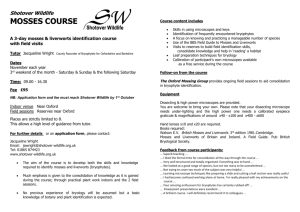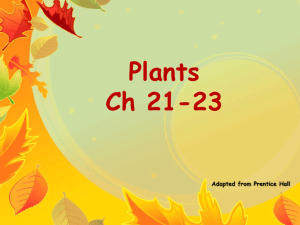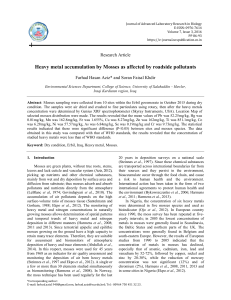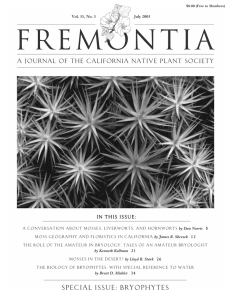Moss SEQUOIA NATIONAL PARK Mosses,
advertisement
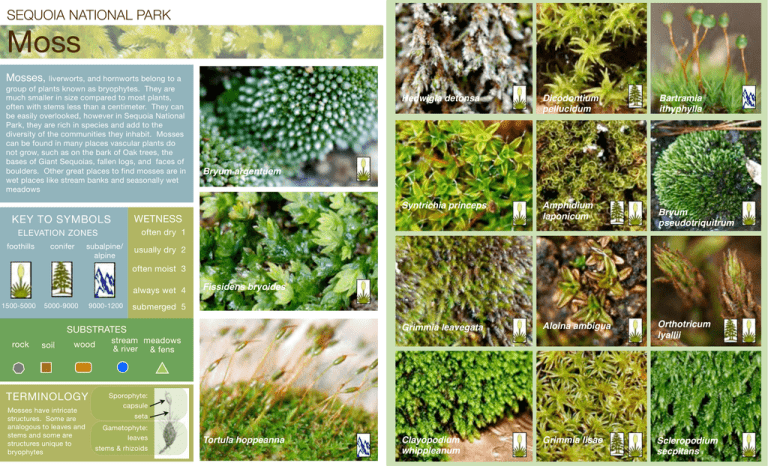
SEQUOIA NATIONAL PARK Moss Mosses, liverworts, and hornworts belong to a group of plants known as bryophytes. They are much smaller in size compared to most plants, often with stems less than a centimeter. They can be easily overlooked, however in Sequoia National Park, they are rich in species and add to the diversity of the communities they inhabit. Mosses can be found in many places vascular plants do not grow, such as on the bark of Oak trees, the bases of Giant Sequoias, fallen logs, and faces of boulders. Other great places to find mosses are in wet places like stream banks and seasonally wet meadows subalpine/ alpine Bartramia ithyphylla Syntrichia princeps Amphidium laponicum Grimmia leavegata Aloina ambigua Orthotricum lyallii Clayopodium whippleanum Grimmia lisae Scleropodium secpitans Bryum argentuem often dry 1 ELEVATION ZONES conifer Dicodontium pellucidum WETNESS KEY TO SYMBOLS foothills Hedwigia detonsa Bryum pseudotriquitrum usually dry 2 often moist 3 always wet 4 1500-5000 5000-9000 9000-1200 Fissidens bryoides submerged 5 SUBSTRATES rock soil wood TERMINOLOGY Mosses have intricate structures. Some are analogous to leaves and stems and some are structures unique to bryophytes stream meadows & river & fens Sporophyte: capsule seta Gametophyte: leaves stems & rhizoids Tortula hoppeanna Dendralsia abietina Funaria hygrometrica Polytrichum piliferum Kindbergia praelonga Fontinalis antipyretica Plagiomnium medium Codriopherous depressus Antitrichia california Pohlia cruda Pseudobraunia californica Dicranoweissia cirrata Cratoneuron filicium Guide and Photos created by Lena Ayala Coleman Dr. Paul Siri Wilson California State University , Northridge For more information see our website: http://www.csun.edu/~hcbio028/cv.html Pleuridium subulatum Aulacomnium palustre Contact information: lena.coleman.519@my.csun.edu paul.wilson@csun.edu





